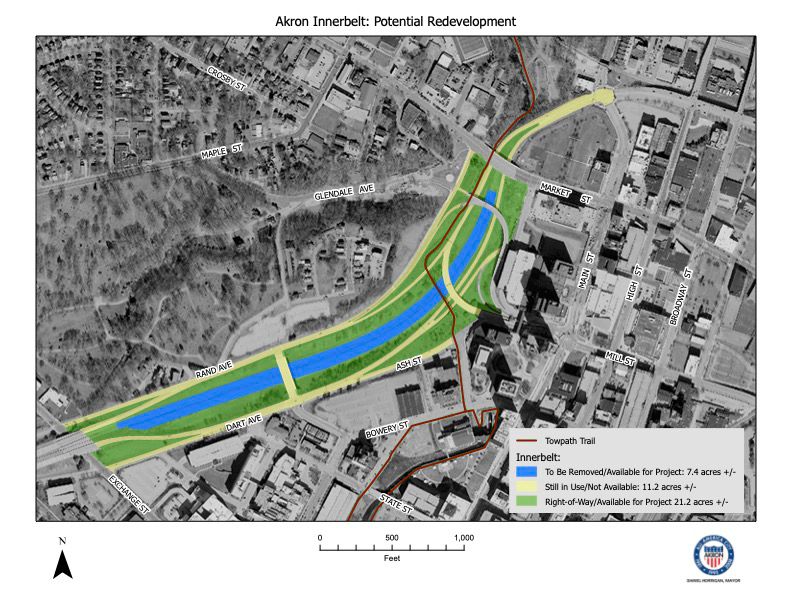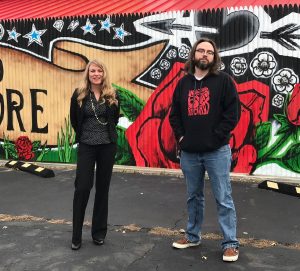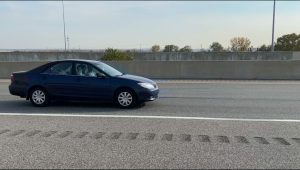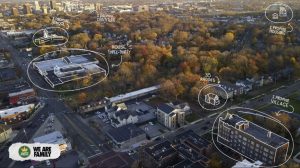AKRON, Ohio — Akron edged out more than 300 U.S. cities to receive a nearly $1 million grant in a first-ever federal program subsidizing projects that help communities damaged by past transportation-related infrastructure decisions.
The city announced in a release it was awarded $960,000 to create a much-anticipated master plan that will transform a one-mile section of Akron’s ill-advised Innerbelt Highway near downtown.
“We’ve been working hand-in-hand with the community, engaging them on what they envision as the best use for this land, and we’re excited to use this funding to look at short- and long-term strategies to address the challenges posed by the Innerbelt,” said Mayor Dan Horrigan.
The Akron project is one of 45 projects awarded a total of $185 million in the first round of grants from the Reconnecting Communities Program under the federal Bipartisan Infrastructure Law, according to the U.S. Department of Transportation. Akron was the only project in Ohio to receive a grant, out of nine Ohio projects that applied.
The grants aim to reconnect communities cut off from opportunity and damaged by infrastructure decisions made in the past, the DOT said in a release.
“Transportation should connect, not divide, people and communities,” said U.S. Transportation Secretary Pete Buttigieg.
In the late ‘60s, the city touted the Innerbelt Highway as a way to draw traffic into downtown to boost Akron’s population. But instead of meeting the 100,000 cars-per-day goal of city engineers, the Innerbelt never carried more than 20,000 cars, the city said.
By 1977 it was clear the Innerbelt would not succeed, which was spelled out in a detailed paper published by Frank J. Kendrick, a University of Akron professor in the Department of Urban Studies.
Although the Innerbelt would not be completed, what was built had decimated a thriving Black neighborhood and business district, cutting off from the city what was left of the neighborhood, along with Summit Lake, Akron’s largest lake, the city said.
Since late 2016, when the city began closing the mile-long section nearest downtown, the community has participated in initiatives to generate ideas for the closed 33 acres. From architectural-design charettes to art projects that manifested a 500-plate meal and a popup forest on the highway, many ideas have been posed as for the Innerbelt.
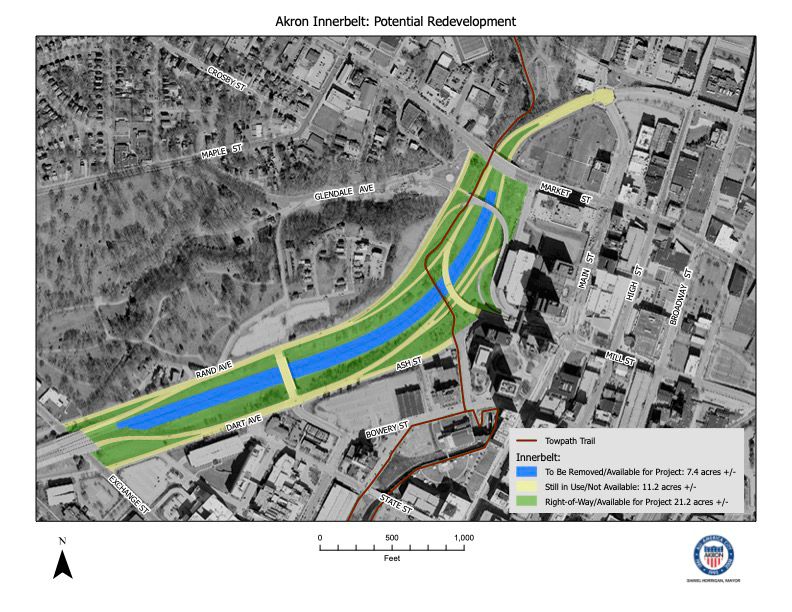
An early diagram of the project space. (City of Akron)
In 2020, the city enlisted Liz Ogbu, an urban designer who has worked around the world on projects requiring community-centric planning and design.
Although the pandemic slowed the work, under Ogbu, the initiatives became more focused on the voices of those who lost thriving businesses and homes when the highway was built.
Ogbu has worked with an Innerbelt Advisory committee comprising those who were directly impacted by the highway, relatives of original families and community leaders.
The work has included an Innerbelt Reunion and a jazz and blues festival, as well as a collection of oral histories by residents who remember the joys of the neighborhood and the grief the highway caused.
Ogbu said she plans to present a report this summer that can help the city understand community preferences for the site, which will dovetail with the planning work that can now be accomplished through the federal grant.
“The idea was, that through my work, we would identify community preferences for the site and my process also includes elements of understanding what this moving-toward-healing looks like,” she said. “So, those were always supposed to be set up as kind of North Stars to then do a more formal master-planning process.”
With 33 acres in the middle of the city, the site presents many logistical challenges, made clear when bringing people physically to the site, Ogbu said.
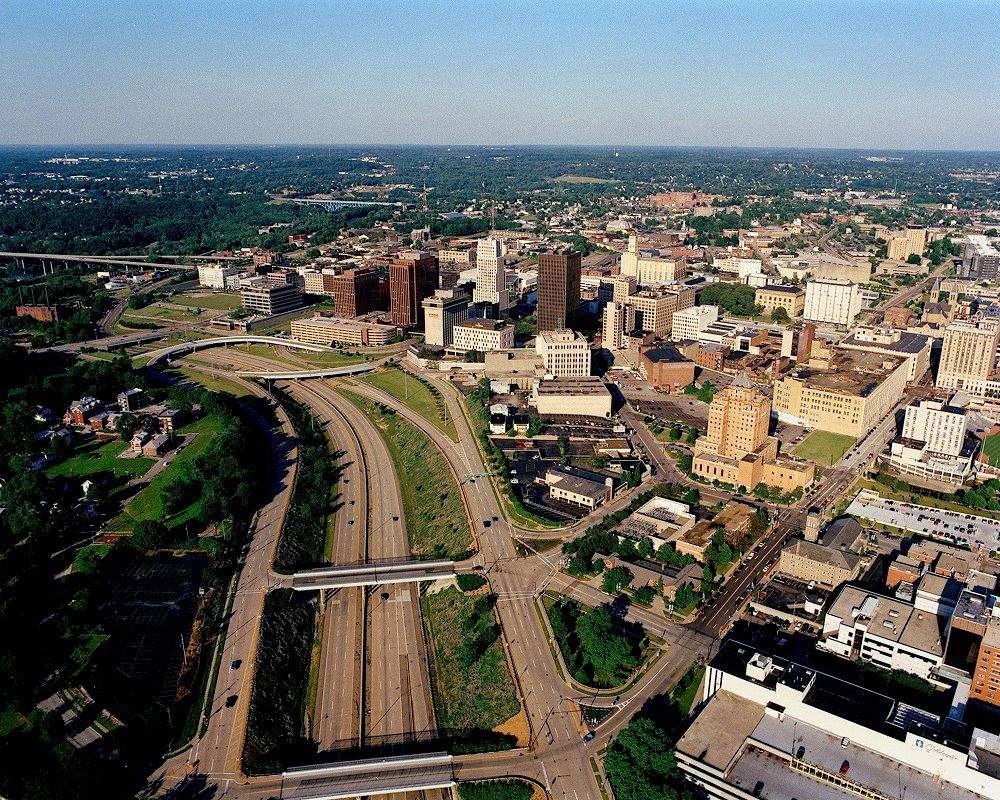
The last stretch of the Innerbelt viewed from the southwest. (Akron Metropolitan Area Transportation Study)
So, it’s likely formal development is years away, she said, but in the meantime, the city asked her to weigh in on possible short-term uses for the site.
To that end, information collection is ongoing in Akron, she said.
While Ogbu is interpreting the results of recent interactions, she’s planning a push this spring with focus groups, ward-meeting presentations and engagement stations at community events, she said.
“This kind of additional engagement will be a little bit more concrete, because by this point, we’ve had six months of data collection that’s given us some sense of ideas, of things that people are interested or not interested in,” she said.
The information gathered this spring will be weighed against what’s been collected so far to help refine her upcoming report, she said.
Following that, the city intends to use the federal grant to create a master plan to identify immediate “interventions” that can have a positive impact and look at ways the land in the closed section might become an asset, the city said.
Sign up online for updates as the Innerbelt project progresses.

